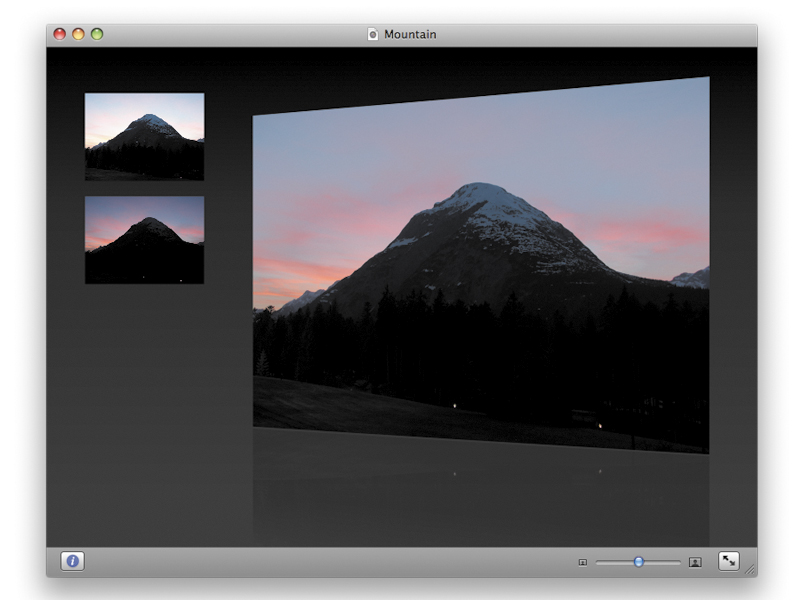TechRadar Verdict
This is a brave attempt, but Hydra lacks RAW handling and doesn’t quite make it when it comes to aligning and blending images
Pros
- +
Lovely interface
- +
Easy to use
- +
Manual control
Cons
- -
Hit-and-miss results
- -
Won’t handle RAW files
- -
Leopard only
Why you can trust TechRadar
Answer the following question: a hydra is (a) a Greek mythical monster with many heads, (b) an album by Toto, or (c) a clever piece of software for digital photographers? The answer, of course, is (c)... It's not as exciting as a Greek monster but it is infinitely more interesting than an album by Toto.
So why is this ambitious piece of software called Hydra? Well, turns out the Hellenic moniker is a rather unsubtle play on the acronym HDR. In the world of digital photography, HDR stands for High Dynamic Range.
If you've ever used a conventional digital camera in bright sunshine, you may have noticed that it's far less able to cope with the extremes of light in the same way that the human eye is.
When you take a picture with your digital camera in bright sunshine, for instance, you're more than likely to get inky black shadows or burnt out highlights with almost no detail left in them at all.
Multiple exposures
The latest fad in digital photography to get around this limitation is to take multiple photos of the same scene at different exposures (one for shadows, one for mid-tones and one for highlights) and then blend them into one image that has lovely highlights and plenty of detail in the darker, shadowy areas.
It can look a bit false if done incorrectly, but it's an interesting technique and one that Hydra attempts to make as easy for you as using iPhoto. The one limitation with HDR photography is that it's not really possible with moving images, as there simply isn't time to record three identical shots at different exposures.
Sign up for breaking news, reviews, opinion, top tech deals, and more.
This is more of a technique for landscapes or dead animals. In fact, anything that's likely to stay stock still and do nothing for ten seconds or more... Perhaps we should add dozing reptiles and politicians to that list.
No RAW handling
Unlike conventional HDR software, Hydra can't handle RAW files from digital cameras. In other words, you need to use JPEG images and let Hydra do its work. That's no bad thing in itself, particularly if you're a beginner and the thought of manipulating and blending RAW images gives you an attack of the vapours.
Hydra doesn't even require you to take your multiple exposures using a tripod, thanks to a clever morphing algorithm that stretches and matches up each image to make one great shot.
This is useful because few of us remember to take our tripod during a romantic stroll along the beach when there's a heavenly sunset to be photographed on the spur of the moment. This is HDR for normal people rather than Photoshop geeks.
Before you start work on your HDR masterpiece, it's important to note that Hydra can only composite up to four shots at a time, and all photographs must be the same size and resolution.
Once you've loaded your shots into Hydra from JPEG files or via iPhoto, you can opt for auto matching or, if the images refuse to line up nicely, you can switch to manual matching. You can do some very precise manipulation with the manual mode and thankfully Hydra makes it easy to move images around.
Blending issues
The second step is to blend the shots once they're aligned. Once again, this can be an automated affair or you can tweak the Blending and Smoothness sliders yourself. It's really up to you. Once the image is to your liking, you can choose to save to the desktop or export it back into iPhoto. Job done!
Hydra does a reasonable job most of the time, but if the images are a little too different then it does struggle to match them up. The new Mac version of Photoshop Elements can also do this type of thing rather better, and it costs only a little more than the $59.99 price-tag for Hydra. It can also do a lot more besides...
If it cost $19.95, Hydra may have been worth a look, but at this price it's really a non-starter.
The TechRadar hive mind. The Megazord. The Voltron. When our powers combine, we become 'TECHRADAR STAFF'. You'll usually see this author name when the entire team has collaborated on a project or an article, whether that's a run-down ranking of our favorite Marvel films, or a round-up of all the coolest things we've collectively seen at annual tech shows like CES and MWC. We are one.
